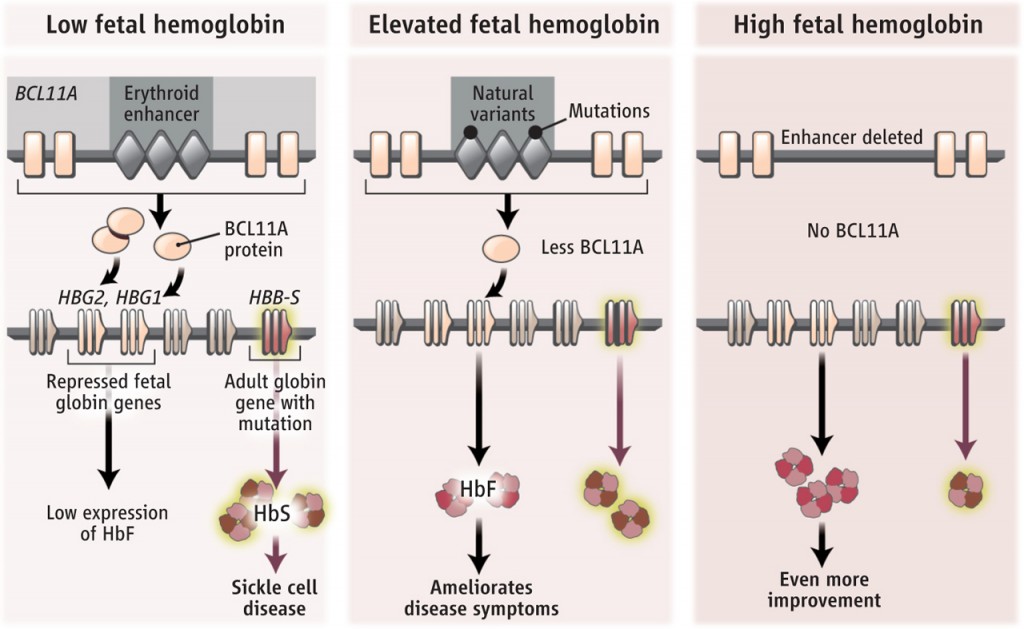
Therapeutic Genome Editing
Therapeutic Genome Editing The β hemoglobinopathies comprise the most common monogenic diseases worldwide, characterized by mutations of the β-globin constituent of hemoglobin. Re-induction of fetal hemoglobin (HbF) would counteract the fundamental molecular defect and constitute curative therapy. Recently we identified an adult-stage erythroid enhancer of BCL11A as a critical determinant of HbF level subject to common genetic variation associated with β-hemoglobinopathy disease severity. We predict that disrupting this genetic element would ameliorate disease by mimicking protective genetic variation. Therapeutic application of genome editing technology allows the precise modification of genetic sequences in human cells. This modality represents a promising novel treatment strategy for genetic diseases, particularly for blood disorders given the ease of autologous hematopoietic stem cell (HSC) harvest, manipulation, and transplant. Ongoing projects are to identify minimal sequences necessary for BCL11A erythroid enhancer function; compare technologies for genome editing in primary human HSCs; and determine the safety and efficacy of such edited cells in reconstituting hematopoiesis. These experiments will enable the development of clinical trials of therapeutic genome editing for the β-hemoglobinopathies.
Image: Schema of disruption of BCL11A erythroid enhancer to raise HbF levels in [b]-globin disorders. Adapted from Hardison & Blobel, 2013.
